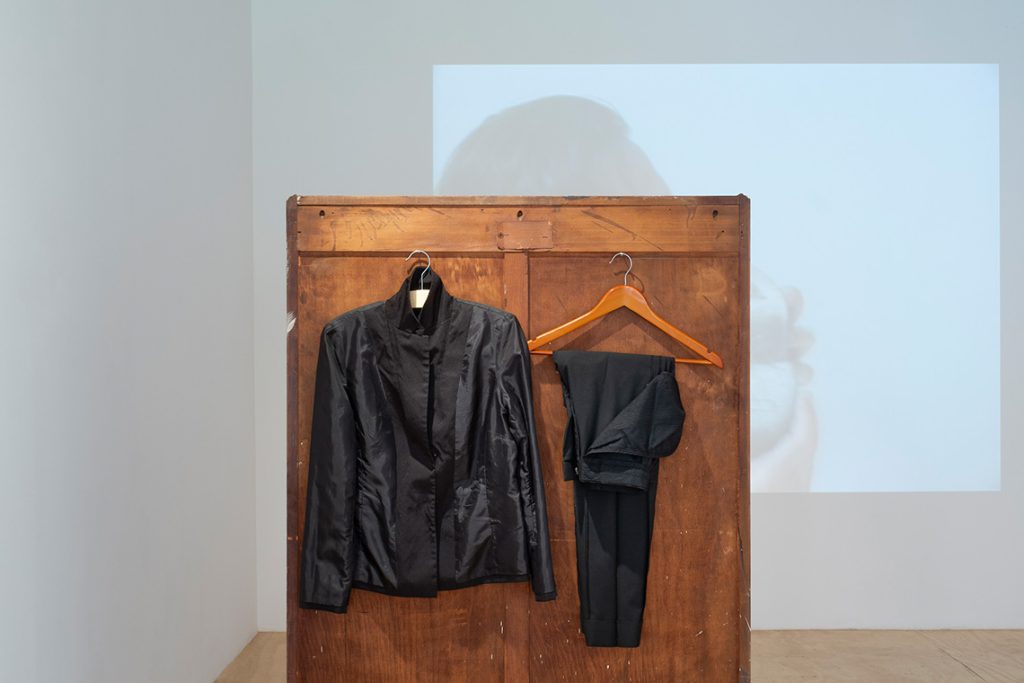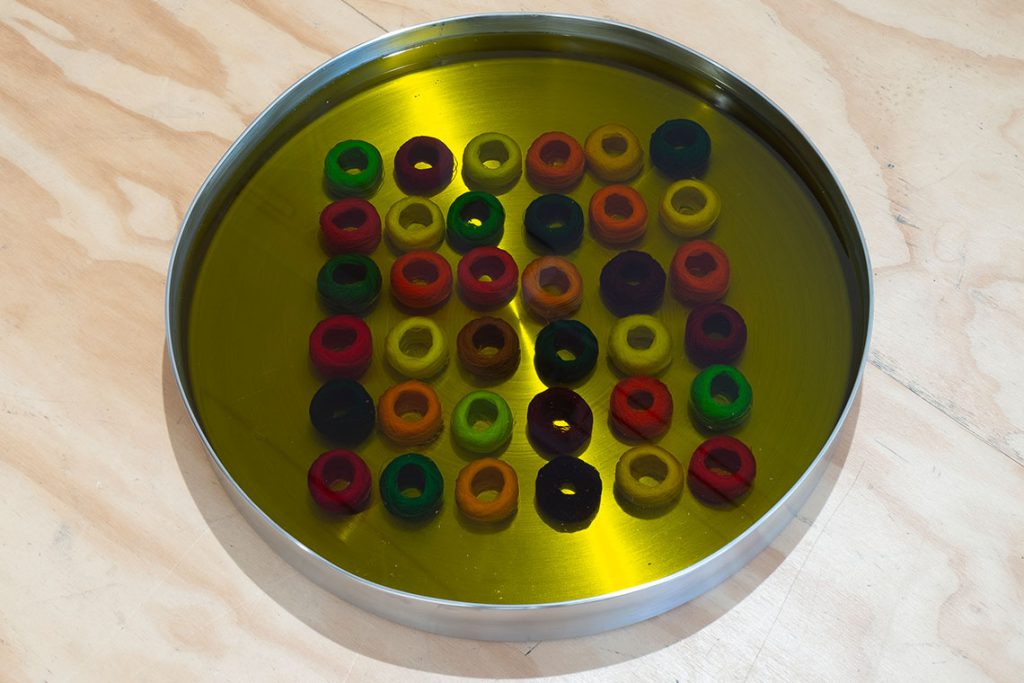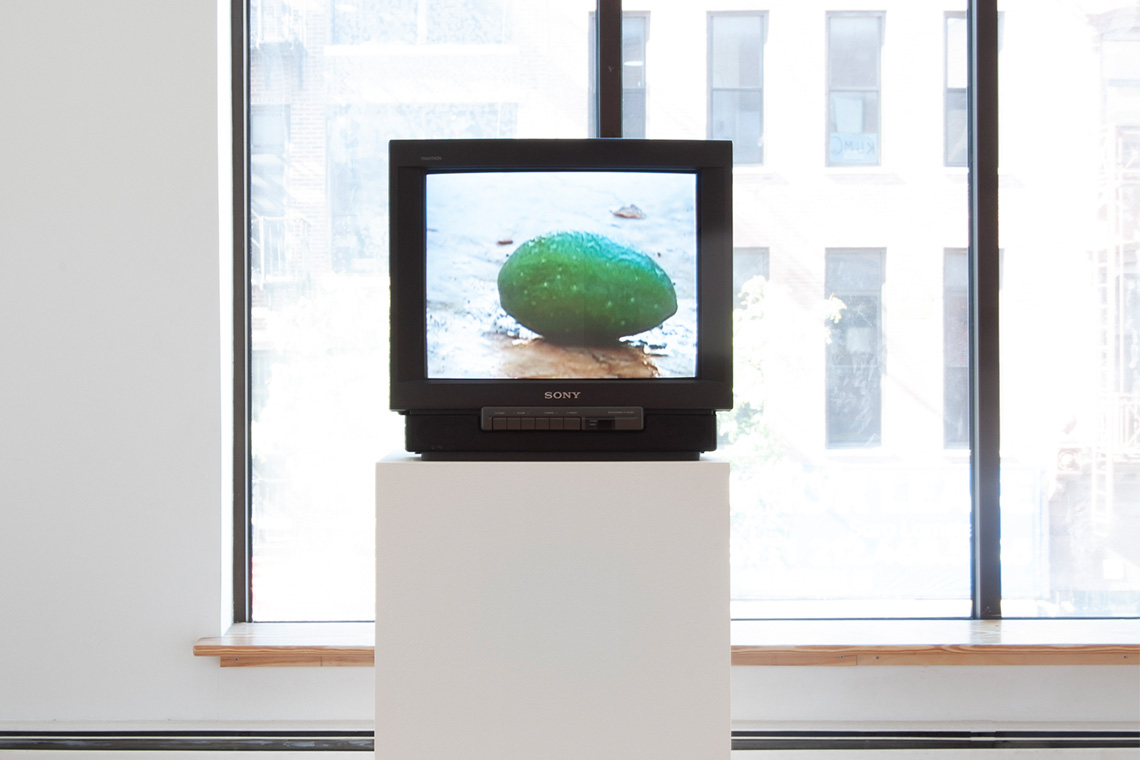The current exhibition I Want To Be With You at Brief Histories in New York showcases work by Khalil Rabah that seeks an elusive sense of groundedness.
It is a sobering thought that almost all the works presented in I Want To Be With You were created by Khalil Rabah in the 1990s, prior to some of the most defining moments in contemporary history. The internet was yet to reprogramme our modes of being and expressions of self, 9/11 had not shuffled the political body, and the art world was premature in reconsidering its association with socially conscious performativity. The Ramallah-based artist’s ambitious Palestinian Museum of Natural History and Humankind project, which questions institutional competence in preserving and narrating histories, was not yet born.

Cut to the lens of the present moment, when Rabah’s videos, sculptures and prints in this mini-survey immediately resonate with a post-internet search for the mundane simplicity and ritualistic assumption of the land. His return to the earth, both as a politicised geography and a well of evanescent stories, overlaps with that of many new generation artists who utilise the chemical and emotional alchemies of place to tackle politics and the body. Back when the artist first exhibited the works, however, they perhaps proposed rather more personal exercises on enduring a world fascinated by the new millennium and its unpredictabilities. The evergreen issues of (in)visibility and autonomy were yet to be muddled by the culture and actual wars of the 2000s. Rabah’s play with the subjects and their objects might have pulled a different cord at a time when reason was not experienced both in the flesh and online, and information enjoyed a different pace of dissemination.
Across the works on view, a bunch of olives is being crushed with patience, a shoe is being fought and bit, a suit is hung on an aged wardrobe. Defining the acts today in passive voice not only imbues them with an enigma about their agents but also reminds us of their static tactility, a pure intention to conduct an act unburdened by the outcome. In the show’s titular video (1998), the hand hitting the freshly picked green fruit to remove their pits remains vague, and so does the identity of whoever left the two-piece woollen suit hanging on a family heirloom dark wood wardrobe in the sculpture Inside Out (2002). The show’s only post-millennial work is in fact the most absorbing one, especially with its embodiment of time in the form of ageing marks across the wooden surface.

Another sculpture shines through a reason-defying and curious juxtaposition. Incubation (1995) contains a shallow, round metal pot filled with a grid of colourful coiled embroidery threads submerged in olive oil. Rabah plays with time and process here by plunging physicality into a liquid valued for its slithery thickness, in which movement is paced down but slippage is ever possible. While the metal container borders the framed fluidity, inside, the chemicals can blend and transform. Similar to the other sculpture’s ambiguous subject, the elements here refuse to reveal their perpetuator, the alchemist of greasy marination.
Revisiting the work 29 years later feels like checking in on an unending science experiment in which the end result is always a step forward. A similar ceaselessness is not amiss for over 13 minutes in I Want To Be With You, in which olives are eternally destined for the stone’s banging, so long as the land yields its sour fruits.
The two-and-half-minute video Body and Sole (1995) is a reminder of the works’ entwined bond to time, with a touch of humour. The artist here struggles to put on or remove his leather shoe with immediate gestures and ambiguous ambitions. The erratic reality of futility commands his effort, which includes putting the shoe in his mouth.



